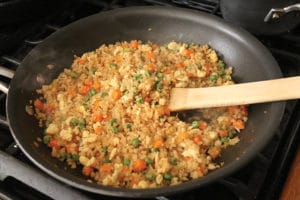Cauliflower - Good For More Than Just Ears
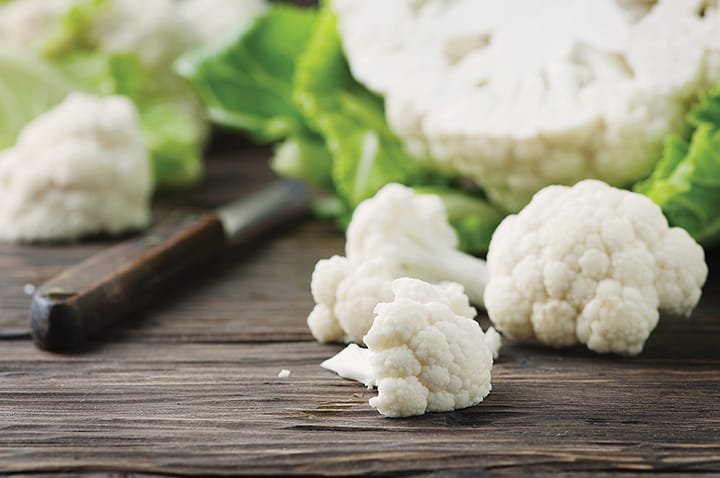
When you hear the term “superfood” thrown around, the first items that come to mind are maybe acai, almonds, avocados, quinoa, kale… the list goes on. One common vegetable you’ve probably been eating since your parents used to force it on you that does deserve to be on every superfood list is cauliflower. Cauliflower has a long list of health benefits, and it’s also super versatile in the kitchen since it’s often called upon as a substitute for starchy foods like rice and potatoes. Let’s take a quick look at this common superfood, cauliflower.
What It Is
Cauliflower is a member of the cruciferous vegetable family. Other cruciferous veggies include broccoli, cabbage, brussel sprouts, and kale. In general, cruciferous veggies are a great source of natural antioxidants. In particular, cauliflower is high in phytochemicals called tocopherols, carotenoids, and ascorbic acid. These antioxidants have shown to inhibit the development of cancer cells, and there’s a correlated evidence in their ability to help prevent diabetes, cardiovascular diseases, neurodegenerative disorders, and other ailments. A one cup serving of cauliflower contains almost no fat, sodium, or sugar. But it is packed with 85% of your daily value of vitamin C along with vitamin K, folate, vitamin B2, pantothenic acid, choline, and Omega-3 fatty acids.
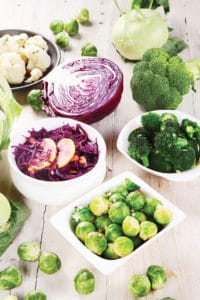
What does This Mean For a Grappler?
Cauliflower should be part of everybody’s diets, aside from the benefits I already mentioned, since cauliflower can help you maintain or lose weight. It’s a great source of fiber, which means it will help you feel full while eating less of the bad stuff. Fiber also helps keep the pipes working in proper order. An entire head of cauliflower only contains 11 grams of sugar, so if you’re going Paleo or low carb, it’s perfect.
How to Cook It
Boiling cauliflower will cause it to lose some of its nutrients since they leach into the cooking water. There will also be some mineral loss if you boil it it. Instead, steaming cauliflower will help it to retain nearly all of its nutrients. Cauliflower can also be eaten raw; however, some people can experience bloating or gas because some of the sugars found in cauliflower can be difficult to digest. You should also avoid raw cauliflower if you have a thyroid condition. In addition to steaming, you can also bake, broil, saute, blanch, and grill cauliflower just to name a few methods. Recently, more and more cooks have discovered that cauliflower is a great substitute for starchy foods like rice and potatoes. In some recipes, it’s even used as a substitute for chicken. Do a simple search on various ways to enjoy cauliflower and you’ll be cooking for days with some of the inventive ideas out there. I’ve picked two of my favorites that are very easy and can be part of your dinner tonight!
Simple Garlic Cauliflower Mash
2 large heads cauliflower
4 cloves garlic
3 tablespoons olive oil
1 cup low-fat buttermilk
Salt and pepper to taste
STEP 1
Cut florets off cauliflower heads and add garlic and steam over high heat for 15 minutes until cauliflower is soft and tender.
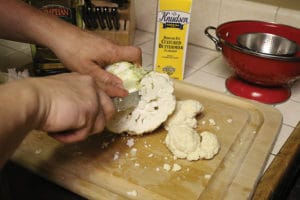

STEP 2
Move steamed cauliflower to a large pan and cook over medium-high heat, constantly stirring until dry, about 3 minutes.

STEP 3
Combine olive oil and buttermilk and with a potato masher mash cauliflower until thick and smooth.


STEP 4
Bring to simmer over medium-high heat. Continue to stir and cooked until warm throughout, about 5 minutes. Season with salt and pepper and serve hot.
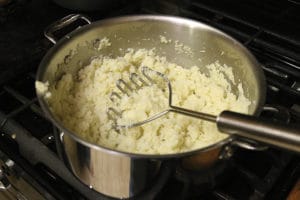
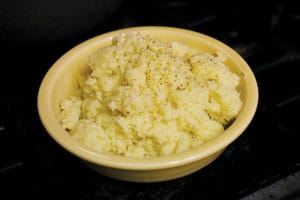
Cauliflower Fried Rice
There’s something out there called “riced cauliflower”; it’s a hit at Trader Joe’s and essentially it’s cauliflower that’s been chopped to a consistency similar to rice. There are a ton of popular recipes using cauliflower rice. Here’s one of my favorites.
1 package frozen cauliflower rice (12oz)
1 cup frozen peas and carrots combo
½ diced onion
2 cloves minced garlic
2 chopped green onions
2 eggs, scrambled
4 teaspoons low-sodium soy sauce
½ tablespoon olive oil
STEP 1
Scramble your eggs, chop them up and set them aside.

STEP 2
In a large skillet saute onions, peas, carrots, and garlic in olive oil until browned and softened.
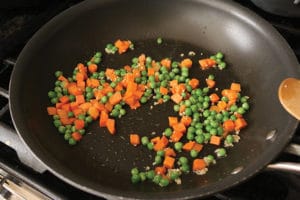
STEP 3
Add thawed cauliflower rice, green onions, and soy sauce and cook and stir until everything is warm and combined.
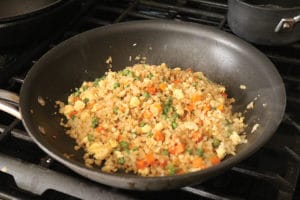
STEP 4
Add eggs and continue to mix ingredients.
STEP 5
Add more soy sauce to taste andserve hot.
